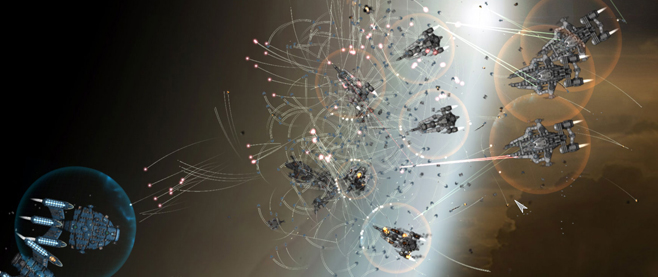
Pathologic 2 and the Anatomy of a Metaphor
Metaphor is one of the most powerful techniques in art to communicate complex feelings on a broad number of high-level topics. It’s a shame, then, that games are shy in using metaphor except either in small pockets within a very literal story or incredibly blatant and artless metaphor that eschews nuance in favor of making sure the audience sees exactly what the metaphor represents. It’s a shame so many games are obsessed with realism to the point where the power of metaphor and subtext is ignored. When used properly, you can use nesting layers of metaphor that clues the audience into the underlying messages and emotions a work is meant to convey while at the same time using different layers of subtlety for different sections of the overarching construct. Pathologic 2 is a perfect example of this, using its unique view of how human bodies work to construct a living metaphor for how a community functions and how to heal it.
Pathologic 2 is a game about disease in more ways than one, but at first, it’s a very surface level read of what disease means. You come back to your hometown after your father sends for you to find that he’s been murdered. Shortly after, a pandemic falls upon the town, and as one of the only doctors available, it’s your job to tend to the sick and work towards finding a cure. The game takes place in compressed real time as you work leads towards the mysteries of the murder and the plague, but it’s also a survival game, so you must worry about staving off your hunger, thirst, and exhaustion. And, of course, you can get infected too. It’s all a lot to worry about, and it leads to an incredibly stressful atmosphere, perhaps one of those most stressful in games history.
One of the cooler aspects of Pathologic 2 is that it lets you do doctor things in between mystery solving and surviving. The first thing you learn is how to do surgery, and it’s incredibly easy to mess up if you’re used to how looting works in most games. You can cut a part of the body and take whatever’s there out – in the introductory scenario’s case, a shiv. But you can also find body parts that shouldn’t be taken out if you want the subject to live. The other bit of doctoring you can do is to identify and treat diseases. In Pathologic 2, the body is divided up into three parts: Blood, Bones, and Nerves. By using homebrewed tinctures, you can identify which part is diseased, then administer the correct antibiotic. It’s incredibly cool that a game that isn’t completely devoted to being a doctor, a la Trauma Center, gives you systems to heal people, but more importantly, it establishes a mythology, an internal logic to the way bodies work that adds mystique but doesn’t overcomplicate the game’s underpinnings.
The trifecta, it turns out, is the heart of the game, as you begin seeing connections between how bodies work in the world of Pathologic 2 and how the town itself works. The list of people you meet come categorized as Bones, Blood, and Nerves, and many references are made to working “the lines”, a mystical technique for healing. Thing is, they’re referenced when talking about fixing the town itself as well. And then you realize that the game is tying the mythology around how bodies work and applying it to the game world. You’re not just healing the people of the town and stopping a pandemic, you’re curing the sickness in the town itself, which includes more than just the plague. There’s corruption, labor transgressions, and a weird disconnect between the many different people in the town even as they’re connected by relationship. And you’ll learn these relationships just as sure as you learned the “lines” in dealing with human bodies. You’ll have to if you want to find out everything that ails the town.
This metaphor goes further still. The survival elements, which initially feel out of place, serve a very specific function: to make you interact with the town. You’re essentially cast as an outsider to the town, and must incorporate yourself into its very bloodstream. In order to survive by procuring food, medicine, or mechanical parts that you need, you need to trade with the people of the town. You can purchase things for money, but it’s overly expensive, forcing you to interface with the townsfolk. But it’s not just that you’re getting what you need from them, but also, they’re getting what they want, too. They’ll only trade for things they need, so you can’t just hoard useless items and hope to get everything you need. To cure this patient, you’ll need to learn how the town works, develop a symbiotic relationship with the town, and leverage its systems to figure out how to cure it. Sometimes that means severing connections so they’ll heal properly, but when it comes to a life-threatening plague, you’ll do what you have to.
Not only is this great world building, but it’s a great use of a living metaphor to convey the anatomy of a community, how it sickens or thrives based on its individual parts. And it’s a great reminder that we’re all connected, for good or ill. The brutality of how Pathologic 2 deals with resources and personal well-being makes it so you can’t help but become an integral part of the body of the town. It’s a metaphor that works because it echoes its own mythology so well, which in turn reflects your role in the game and a desire to keep its systems concise to better layer them on top of one another. The way Pathologic 2 intertwines metaphor, mythology, and mechanics is an awe-inspiring example of how games can trade in more than just hyper-realistic fare and get more literary in the process.





